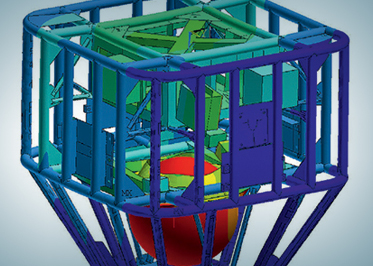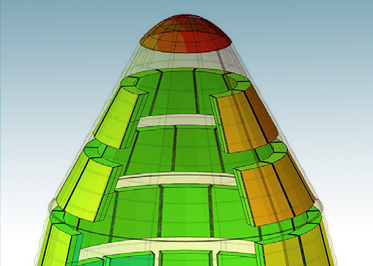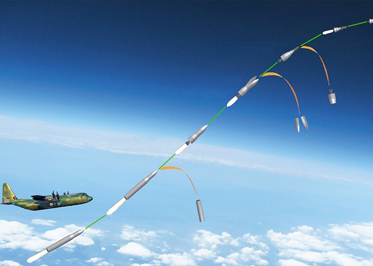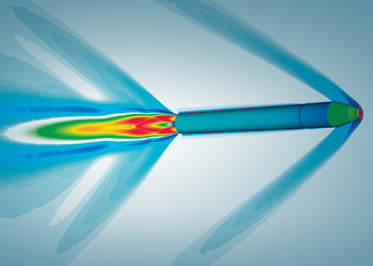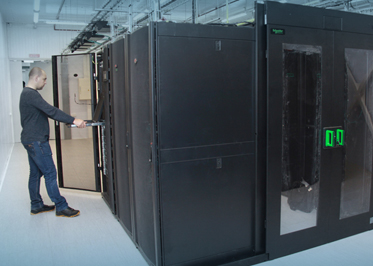Services
Services
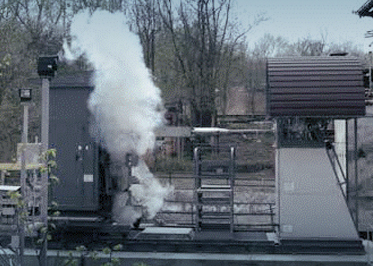
Project description
Design and Analytical Support
FLUID DYNAMICS
FLUID DYNAMICS
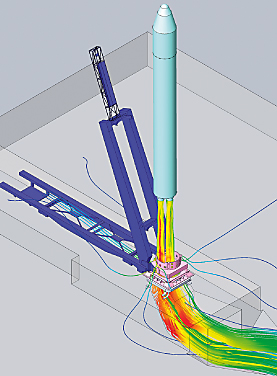
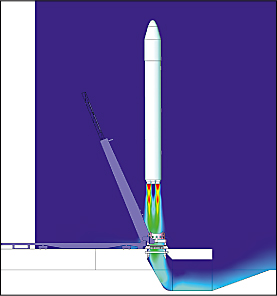
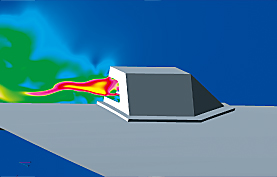
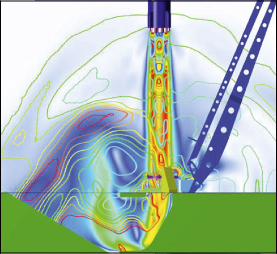
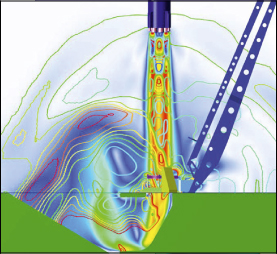
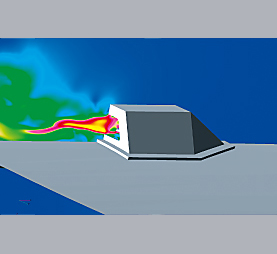
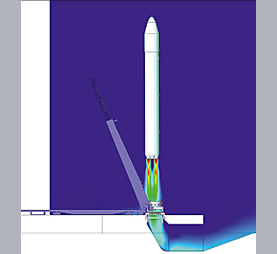
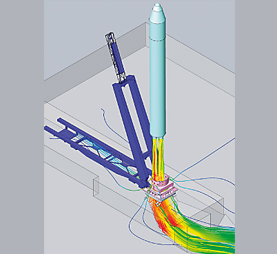


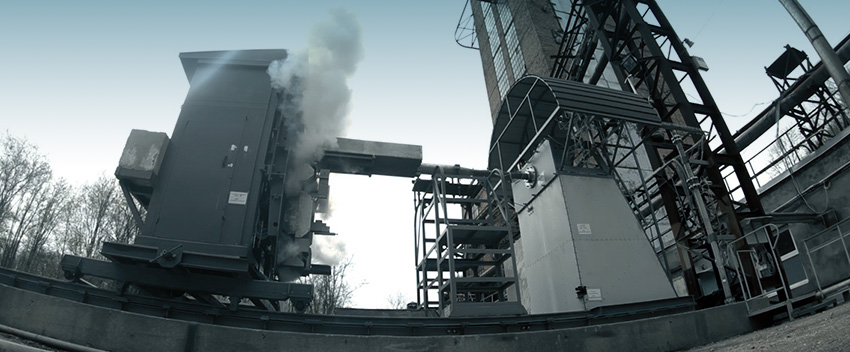
It is advisable to run the experimental demonstration of gas-dynamic loads at the early SLS design stages, on a gas-dynamic bench-scale test unit.

It is advisable to run the experimental demonstration of gas-dynamic loads at the early SLS design stages, on a gas-dynamic bench-scale test unit.


| Distance from the gas generator to the model, m | 0-10 |
| Working fluid temperature at the gas generator outlet, °С, not more than | 330 |
| Propellant consumption | ±0,09/0,0015 |
| – Kerosene, kg/s, not more than | 0,12 |
| – Air at Р=53 kgf/cm², kg/s, not more than | 5 |
| Number of parameters measured | 96 |
| Recording frequency, kHz | 0,5-5 |
| Distance from the gas generator to the model, m | 0-10 |
| Working fluid temperature at the gas generator outlet, °С, not more than | 330 |
| Propellant consumption | ±0,09/0,0015 |
| – Kerosene, kg/s, not more than | 0,12 |
| – Air at Р=53 kgf/cm², kg/s, not more than | 5 |
| Number of parameters measured | 96 |
| Recording frequency, kHz | 0,5-5 |
https://www.golfchannel.co.th/tv-schedule/
http://www.eiar.gov.et/contact/
https://www.iimmkolkata.com/dmlm/
https://autocaravanasgayo.com/servicios/
https://laboutique.jormax.com/loja/millenium/
https://behzadiplastics.com/contactus/
https://joadahconsult.com/team_design/
https://www.visitasguiadastui.com/tour-item/tui-historico/
https://institutoebenezer.net/evento/united-states-independence-day
https://navesa.com.br/contato/
https://www.fc-ekeren.be/kalender/
https://colsadav.org/profesores/
https://www.rmragman.authorsbreeze.com/contact-us/
https://www.internacionaldvdspain.com/articles/decoracion/
https://exin.se/flytt-och-transport/
https://www.qlmagic.com/turn_structure/
https://www.saborlatino.jp/categoria-produto/22000/
https://publicistpaper.com/contact/
https://seocompany.us.com/portfolio/
https://atharveducation.com/bds.php/
https://www.casacarbone.com/fdm-menu-section/entrees/
https://www.iti.edu.pa/engine/
https://www.shortcuts.es/soluciones/software-peluqueria/
https://odin.rvbar.ru/poster/vorovayki/
https://newnoardicwave.com/privacy-policy/
https://www.envision-plus.co.th/
https://cbdconsulting.com/technology/tinkercad/
https://learningsessions.in/caiib-exam-date/
https://www.shortcuts.es/demos/
https://atlpanama.com/contactenos/
https://einkaufsgemeinschaft.agritec.at/aktionen/
https://thecolorrun.pt/pt/about/
https://odin.rvbar.ru/restoran/
https://alejandrodavidovich.com/
https://mycreativitymypower.eu/
https://fineline.uk.com/modelmaking/
https://yvonnedme.com/premier-bet-zone-mobile/
https://navesa.com.br/politica-de-privacidade/
https://lyon.snuep.fr/category/mutations/intra/
https://cucgachcafe.com.vn/luong-minh-phuong-la-ai/
https://www.booksarepopculture.com/
https://tunaskaryajakarta.sch.id/
https://www.visitasguiadastui.com/contacto/
https://www.vizgraphics.com/showcase/
https://jdi.ac.ug/application/
https://www.kiadesivo.com.br/contato/
https://www.kiadesivo.com.br/obrigada-pela-compra/
https://www.kiadesivo.com.br/politica-de-privacidade/
